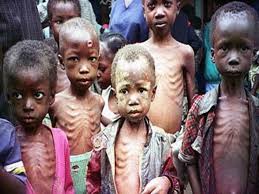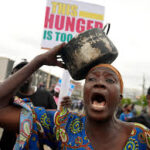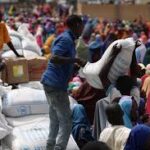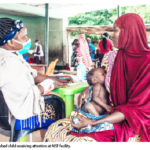Malnutrition Kills 652 Children in Nigeria

Nigeria is facing a deepening nutritional crisis as at least 652 children have died from severe malnutrition in the first half of 2025, according to official reports from UNICEF and Nigeria’s Federal Ministry of Health. The data reveals that despite ongoing interventions, the country remains one of the most severely affected in the world when it comes to childhood malnutrition.
Experts warn that if urgent action is not taken, the figures could climb significantly higher by the end of the year. The situation has been described as a “silent emergency,” claiming young lives daily in many rural and conflict-affected communities.
The Scope of the Crisis
According to UNICEF, over 3.6 million children under the age of five in Nigeria suffer from acute malnutrition. The majority of cases are recorded in the country’s northern states, particularly Borno, Yobe, Zamfara, and Katsina, where conflict, poverty, and displacement continue to fuel food insecurity.
The first six months of 2025 saw a dramatic spike in reported cases compared to the same period in 2024, when malnutrition-related child deaths stood at approximately 430. This indicates a 52% year-on-year increase, underscoring how fragile the situation has become.
Causes of Malnutrition in Nigeria
Several interlinked factors contribute to the malnutrition crisis:
-
Conflict and Displacement: Ongoing insurgency and banditry in the North have displaced thousands of families, cutting them off from farmland and stable food supplies.
-
Food Insecurity: Rising food prices, worsened by inflation and climate-related shocks such as drought and flooding, make it increasingly difficult for families to afford nutritious meals.
-
Healthcare Gaps: Limited access to primary healthcare centers means children are not receiving timely screening and treatment for malnutrition.
-
Poor Infant Feeding Practices: Lack of awareness on exclusive breastfeeding and balanced diets contributes to preventable malnutrition cases.
Government and International Response
The Nigerian government, in partnership with UNICEF, the World Food Programme (WFP), and other NGOs, has been scaling up interventions such as Community-Based Management of Acute Malnutrition (CMAM) programs. These initiatives aim to provide ready-to-use therapeutic food (RUTF), nutrition supplements, and early detection services for vulnerable children.
In June 2025, the Federal Ministry of Health announced plans to expand nutrition treatment centers across 12 high-burden states. Additionally, UNICEF pledged to provide over 2 million cartons of RUTF to treat children suffering from severe acute malnutrition.
However, funding shortfalls remain a major challenge. UNICEF Nigeria recently stated that only 34% of required funding for nutrition programs in 2025 has been secured, leaving millions of children at risk.
Human Impact: Stories Behind the Numbers
Behind the statistics are heart-wrenching stories of families struggling to keep their children alive. In Zamfara State, Fatima, a mother of three, shared her ordeal:
“My son became very weak and thin. I took him to the local health center, but they had no medicine. I had to travel 40 kilometers before he was given treatment. Not every mother is as lucky.”
Sadly, many children do not survive the journey to care facilities, highlighting the urgent need for community-level interventions and mobile nutrition clinics.
Experts Call for Urgent Action
Nutrition experts emphasize that combating child malnutrition requires a multi-sectoral approach. Beyond emergency food aid, long-term solutions must address poverty, food systems, clean water access, and maternal education.
Dr. Hadiza Aliyu, a nutritionist at Ahmadu Bello University, noted:
“Malnutrition is not just about hunger; it is about inequality. Unless Nigeria invests heavily in child nutrition programs, education for mothers, and resilient agriculture, we will continue to lose children unnecessarily.”
The Way Forward
To reverse the alarming trend, experts recommend:
-
Increased Funding: Prioritize nutrition in government budgets and attract more donor support.
-
Strengthening Primary Healthcare: Improve access to screening, treatment, and follow-up care for malnourished children.
-
Scaling Up RUTF Distribution: Ensure supply chains are reliable, even in remote areas.
-
Promoting Nutrition Education: Encourage breastfeeding and balanced diets at the community level.
-
Building Food Security: Invest in local agriculture and climate-smart farming to reduce reliance on expensive imports.
Conclusion
The report that 652 Nigerian children died from malnutrition in just six months of 2025 is a wake-up call for the government, international partners, and civil society. The crisis is preventable, yet it continues to devastate families across the country.
Unless urgent action is taken, Nigeria risks losing an entire generation to malnutrition and hunger. Addressing this challenge is not only a humanitarian obligation but also a critical step toward securing the nation’s future.



